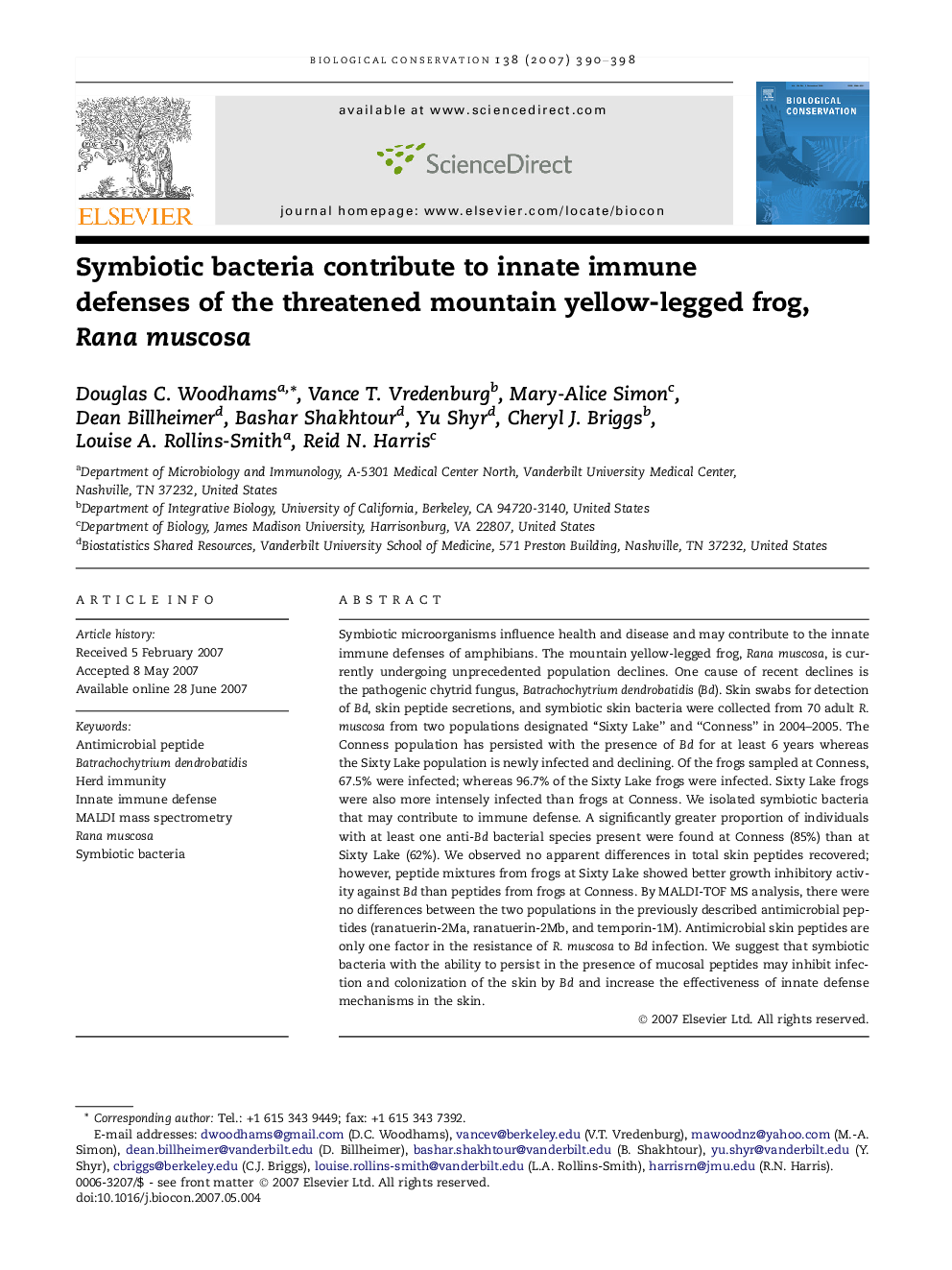| کد مقاله | کد نشریه | سال انتشار | مقاله انگلیسی | نسخه تمام متن |
|---|---|---|---|---|
| 4387163 | 1617955 | 2007 | 9 صفحه PDF | دانلود رایگان |

Symbiotic microorganisms influence health and disease and may contribute to the innate immune defenses of amphibians. The mountain yellow-legged frog, Rana muscosa, is currently undergoing unprecedented population declines. One cause of recent declines is the pathogenic chytrid fungus, Batrachochytrium dendrobatidis (Bd). Skin swabs for detection of Bd, skin peptide secretions, and symbiotic skin bacteria were collected from 70 adult R. muscosa from two populations designated “Sixty Lake” and “Conness” in 2004–2005. The Conness population has persisted with the presence of Bd for at least 6 years whereas the Sixty Lake population is newly infected and declining. Of the frogs sampled at Conness, 67.5% were infected; whereas 96.7% of the Sixty Lake frogs were infected. Sixty Lake frogs were also more intensely infected than frogs at Conness. We isolated symbiotic bacteria that may contribute to immune defense. A significantly greater proportion of individuals with at least one anti-Bd bacterial species present were found at Conness (85%) than at Sixty Lake (62%). We observed no apparent differences in total skin peptides recovered; however, peptide mixtures from frogs at Sixty Lake showed better growth inhibitory activity against Bd than peptides from frogs at Conness. By MALDI-TOF MS analysis, there were no differences between the two populations in the previously described antimicrobial peptides (ranatuerin-2Ma, ranatuerin-2Mb, and temporin-1M). Antimicrobial skin peptides are only one factor in the resistance of R. muscosa to Bd infection. We suggest that symbiotic bacteria with the ability to persist in the presence of mucosal peptides may inhibit infection and colonization of the skin by Bd and increase the effectiveness of innate defense mechanisms in the skin.
Journal: Biological Conservation - Volume 138, Issues 3–4, September 2007, Pages 390–398